How Oil Immersed Transformer Works: Principles Explained Simply?
Have you ever wondered how those big, humming boxes in electrical substations work? They’re oil immersed transformers, and they’re crucial for our power grid. But how do they actually function?
Oil immersed transformers work on the principle of electromagnetic induction, using oil for insulation and cooling. The transformer’s core and windings are immersed in oil, which helps transfer heat and provides electrical insulation. This design allows for efficient voltage transformation and heat management in high-power applications.
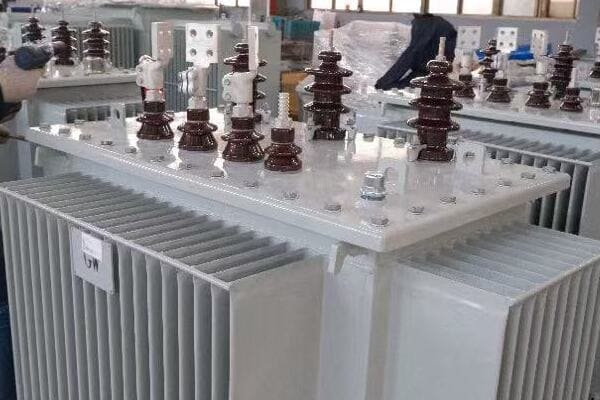
In my years working with power systems, I’ve seen how these transformers play a vital role in our electrical infrastructure. They’re like the unsung heroes of our power grid, working tirelessly to ensure we have the right voltage for our homes and businesses. Let’s dive into how these fascinating machines work.
The Basics of Electromagnetic Induction: Understanding the Core Principle of Oil Immersed Transformers?
Ever played with magnets as a kid? If you did, you’ve already experienced the basic principle behind transformers. But how does this childhood fascination translate into powering our cities?
Electromagnetic induction is the core principle of oil immersed transformers. When an alternating current flows through the primary winding, it creates a changing magnetic field in the transformer’s core. This changing field induces a voltage in the secondary winding, allowing for voltage transformation. The oil provides insulation and cooling for this process.
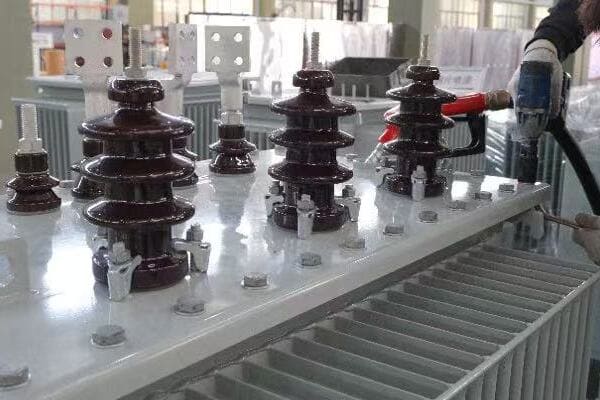
I remember the first time I saw this principle demonstrated in a lab. It was like magic, but with a solid scientific explanation. Let’s break it down further:
The Primary Winding
Where it all begins:
- Alternating Current: The input power that changes direction many times per second.
- Magnetic Field Generation: The current creates a magnetic field around the winding.
- Core Magnetization: The iron core concentrates and directs this magnetic field.
In my early days as an engineer, I worked on a project to upgrade a substation. We had to carefully calculate the number of turns in the primary winding to match the input voltage. It was crucial for the transformer’s efficiency.
The Core
The magnetic highway:
| Core Type | Advantages | Common Applications |
|---|---|---|
| Laminated Steel | Reduces eddy currents | Most common in power transformers |
| Ferrite | High frequency operation | Electronic transformers |
| Amorphous Metal | Lower core losses | High-efficiency distribution transformers |
I once visited a transformer manufacturing plant where they were experimenting with amorphous metal cores. The reduction in core losses was impressive, leading to significant energy savings over the transformer’s lifetime.
The Secondary Winding
Delivering the transformed voltage:
- Induced Voltage: The changing magnetic field creates a new current.
- Turns Ratio: Determines the voltage change between primary and secondary.
- Load Connection: Where the transformed power is delivered to the electrical system.
In a recent project, we needed to step down voltage from 33kV to 415V for a factory. The turns ratio calculation was critical. We ended up with a ratio of about 80:1, which gave us the perfect output voltage for the factory’s equipment.
The Role of Transformer Oil: Insulation and Cooling in Oil Immersed Systems?
Ever wondered why transformers are filled with oil? It’s not just to make them heavier! The oil plays a crucial role, but what exactly does it do?
Transformer oil serves two primary functions: electrical insulation and cooling. As an insulator, it prevents electrical discharges between components. For cooling, it absorbs heat from the core and windings and transfers it to the outer casing. This dual role allows oil immersed transformers to handle high voltages and power loads efficiently.
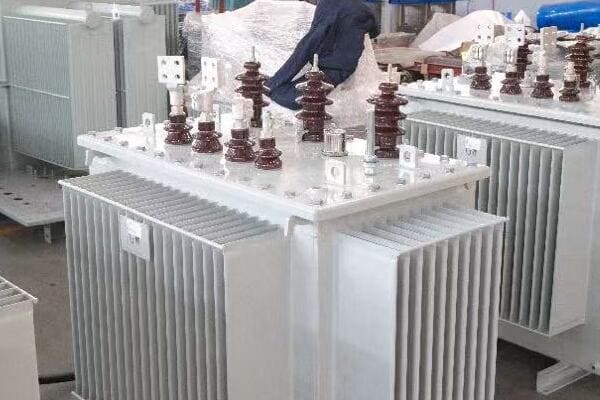
Throughout my career, I’ve seen how vital proper oil management is for transformer performance. Let’s explore the key roles of transformer oil:
Electrical Insulation
Keeping the electrons in check:
- Dielectric Strength: Oil has high resistance to electrical breakdown.
- Gap Filling: It fills spaces between windings, preventing arcing.
- Moisture Protection: Quality oil keeps moisture away from sensitive components.
I once worked on troubleshooting a transformer that had developed partial discharges. We found that moisture had contaminated the oil, reducing its insulating properties. After a thorough oil treatment and refill, the transformer was back to peak performance.
Heat Transfer and Cooling
Managing the hotspots:
| Cooling Method | Description | Application |
|---|---|---|
| ONAN | Oil Natural, Air Natural | Smaller transformers |
| ONAF | Oil Natural, Air Forced | Medium-sized transformers |
| OFAF | Oil Forced, Air Forced | Large power transformers |
In a recent project for a high-power transformer in a hot climate, we implemented an OFAF cooling system. The forced oil circulation significantly improved heat dissipation, allowing the transformer to operate efficiently even in extreme temperatures.
Oil Quality and Maintenance
Keeping it clean and effective:
- Regular Testing: Checking for contaminants, acidity, and dielectric strength.
- Filtration: Removing particles and moisture to maintain oil quality.
- Oil Replacement: Sometimes necessary for very old or heavily contaminated oil.
I’ve been involved in several transformer maintenance programs. One time, we caught a developing fault early through routine oil analysis. The early detection saved the utility company from a potential transformer failure and costly downtime.
Anatomy of an Oil Immersed Transformer: Key Components and Their Functions?
Have you ever peeked inside a transformer? It’s a complex assembly of components, each with a specific role. But what are these parts, and how do they work together?
An oil immersed transformer consists of several key components: the core, windings, tank, bushings, and cooling system. The core and windings perform the actual voltage transformation, while the tank contains the oil. Bushings provide insulated entry points for conductors, and the cooling system manages heat. Understanding these components is crucial for grasping transformer operation.
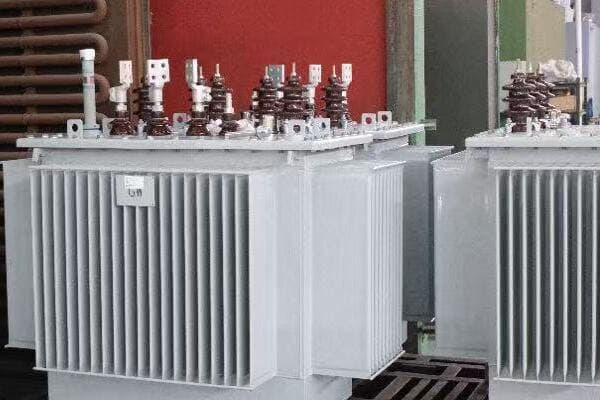
In my years of working with transformers, I’ve come to appreciate the intricate design of these machines. Let’s break down the main components:
The Core and Windings
The heart of the transformer:
- Core: Usually made of laminated steel to reduce eddy current losses.
- Primary Winding: Receives the input voltage.
- Secondary Winding: Delivers the transformed output voltage.
I once participated in the design of a custom transformer for a renewable energy project. We had to carefully calculate the core size and winding configuration to match the variable input from wind turbines. It was a challenging but rewarding experience.
The Tank and Oil
Containing and cooling:
| Component | Function | Design Considerations |
|---|---|---|
| Tank | Houses core, windings, and oil | Must be leak-proof and expand with heat |
| Oil | Insulates and cools | Needs to circulate effectively |
| Expansion Tank | Accommodates oil volume changes | Prevents oil oxidation |
During a transformer installation project, we had to carefully plan the positioning of the main tank and expansion tank. The layout had to allow for easy oil circulation while also considering maintenance access. It’s a balance of engineering and practicality.
Bushings and Accessories
Connecting and monitoring:
- Bushings: Insulated passages for conductors to enter/exit the tank.
- Tap Changer: Allows for voltage adjustment.
- Monitoring Devices: Temperature gauges, oil level indicators, pressure relief devices.
I recall a project where we upgraded old bushings on a high-voltage transformer. The new composite bushings not only improved insulation but also reduced the risk of explosive failure. It’s amazing how such seemingly simple components can have a big impact on safety and performance.
Heat Management and Electrical Insulation: How Oil Enhances Transformer Performance?
Ever touched a running electronic device and felt it warm up? Now imagine that heat multiplied many times over in a transformer. How does oil help manage this heat while also providing crucial insulation?
Oil in transformers serves a dual purpose in heat management and electrical insulation. It efficiently absorbs heat from the core and windings, circulating it to cooling surfaces. Simultaneously, its high dielectric strength provides excellent electrical insulation. This combination allows transformers to operate at high voltages and power levels while maintaining safe temperatures.

Throughout my career, I’ve seen how critical proper oil management is for transformer performance. Let’s dive deeper into how oil enhances transformer operation:
Heat Absorption and Circulation
Keeping it cool:
- Natural Convection: Hot oil rises, cooler oil sinks, creating circulation.
- Forced Circulation: Pumps move oil for more efficient cooling in larger transformers.
- External Radiators: Increase surface area for heat dissipation.
I once worked on optimizing the cooling system for a large power transformer. By redesigning the oil flow paths and adding more efficient radiators, we managed to reduce the operating temperature by 15°C. This not only improved efficiency but also extended the transformer’s lifespan.
Electrical Insulation Properties
Preventing breakdowns:
| Property | Function | Importance |
|---|---|---|
| High Dielectric Strength | Resists electrical breakdown | Allows for compact design |
| Low Viscosity | Fills small gaps effectively | Prevents partial discharges |
| Chemical Stability | Maintains properties over time | Ensures long-term reliability |
In a recent project, we had to select oil for a transformer operating in extreme cold. We chose a special low-viscosity oil that maintained its insulating properties even at -40°C. It’s fascinating how the right oil can make a transformer work in such challenging conditions.
Monitoring and Maintenance
Keeping oil in top shape:
- Regular Oil Testing: Checking for contaminants, moisture, and breakdown voltage.
- Dissolved Gas Analysis (DGA): Detecting potential faults by analyzing gases in the oil.
- Oil Filtration and Regeneration: Maintaining oil quality over the transformer’s lifetime.
I’ve been involved in implementing online DGA monitoring systems for critical transformers. In one case, the system detected a developing fault months before it would have caused a failure. This early warning allowed for planned maintenance, avoiding a costly outage.
Maintenance and Longevity: Ensuring Optimal Operation of Oil Immersed Transformers?
Worried about the lifespan of your transformer? You should be. These are expensive, critical pieces of equipment. But how do you make sure they last as long as possible while performing at their best?
Maintaining oil immersed transformers involves regular oil testing, component inspections, and proactive repairs. Key activities include oil quality checks, dissolved gas analysis, winding resistance measurements, and cooling system maintenance. Proper maintenance not only extends the transformer’s life but also ensures efficient and reliable operation, preventing costly failures and downtime.
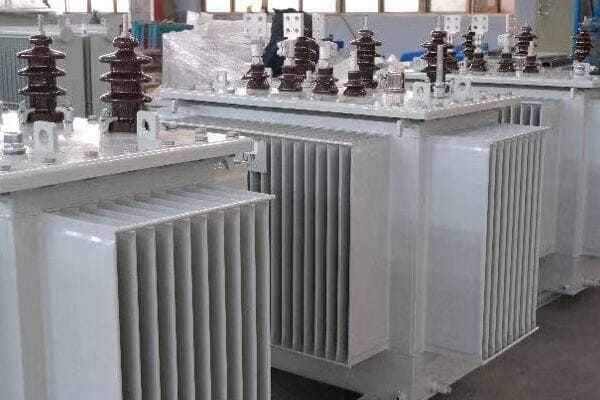
In my years of experience, I’ve seen how good maintenance practices can dramatically extend a transformer’s life. Let’s explore the key aspects of transformer maintenance:
Regular Oil Testing and Analysis
The lifeblood check:
- Dielectric Strength Test: Ensures oil can withstand electrical stress.
- Acidity Test: Checks for oil degradation.
- Moisture Content Analysis: Prevents insulation breakdown.
I once worked with a utility company to implement a comprehensive oil testing program. Within the first year, we identified three transformers with declining oil quality. Early intervention saved them from potential failures and extended the transformers’ lives by years.
Electrical Testing
Ensuring internal health:
| Test | Purpose | Frequency |
|---|---|---|
| Winding Resistance | Detect winding damage | Annually |
| Turn Ratio Test | Verify transformer ratio | Every 2-3 years |
| Insulation Resistance | Check insulation integrity | Annually |
In a recent maintenance project, we discovered a slight change in winding resistance in an old transformer. Further investigation revealed a developing hot spot. We were able to repair it before it caused a major failure, saving the client from a potential plant shutdown.
Cooling System Maintenance
Keeping it chill:
- Radiator Cleaning: Ensures efficient heat dissipation.
- Fan and Pump Checks: For forced-oil and forced-air systems.
- Oil Level Monitoring: Maintains proper oil circulation.
I helped design a maintenance schedule for a substation with multiple large transformers. By implementing regular cleaning and checks of the cooling systems, we reduced the average operating temperature of the transformers by 8°C. This not only improved efficiency but also significantly extended their operational life.
Conclusion
Oil immersed transformers work through electromagnetic induction, with oil providing crucial insulation and cooling. Understanding their components, operation principles, and maintenance needs is key to ensuring their efficient and long-lasting performance in power systems.
Free CHBEB Transformer Catalog Download
Get the full range of CHBEB transformers in one catalog.
Includes oil-immersed, dry-type, pad-mounted, and custom solutions.
Quick Message
Request A free quote
We'd like to work with you
- +86 15558785111
- [email protected]
- +86 15558785111
What We Do
CHINA BEI ER BIAN (CHBEB) GROUP, with 218 million in registered capital, originated from Beijing Beierbian Transformer Group. Headquartered in Beijing for R&D, it operates major production bases in Nanjing and Yueqing, producing high-quality products.
Latest Product
address
BeiJing
No 3,RongJing East Road,BeiJing Economic Technological Development Area,BeiJing,China
JiangSu
No 7️Xiangfeng Road,Jiangning,NanJing,JiangSu,China
WenZhou
No.211, Wei 16 Road, Industrial Zone, Yueqing, Wenzhou, Zhejiang, China.
XiangYang Industrial Zone ,YueQing,WenZhou,ZheJiang,China
contact us
- [email protected]
- +86 13057780111
- +86 13057780111
- +86 15558785111
Copyright © Bei Er Bian Group


